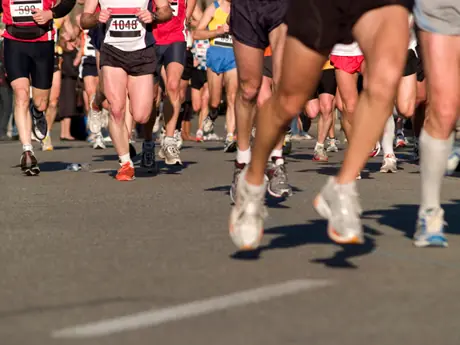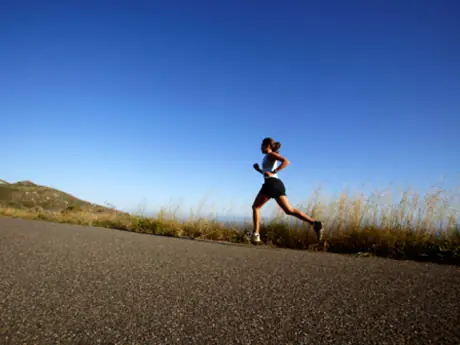Heart Rate Training
Not so long ago only world-class triathletes and bike racers wore those weird black chest straps. Today, heart rate monitors are everywhere. The word is out. Heart rate training is a great way to improve your performance, avoid over-training, and track your fitness. Heart rate monitors are also great motivational aids, providing instant feedback on your wrist. The monitors do have their limitations, though.
Most trainers, coaches, and athletes establish heart rate zones for distinct training goals. These zones are based on an estimate of the athlete's maximum heart rate. For example, your heart rate should stay between 60% and 75% of your maximum heart rate on your easy days. The problem lies in estimating your maximum heart rate. Many people have adopted a rule-of-thumb: Maximum Heart Rate = 220-Age. Researchers have discredited this estimate though, replacing it with gender specific equations:
Male Maximum Heart Rate = 214 - (0.8*age)
Female Maximum Heart Rate= 209 - (0.7*age)
This is still a gross estimate. In reality, maximum heart rate varies greatly among people of the same age. Consequently, if you guess your maximum heart rate poorly, you end up with inaccurate training zones. If you aren't careful, you may be over or under training.
Knowing Your Pace
For runners and walkers, heart rate is used to estimate effort, a secondary measurement of performance. The best measurement of performance is the speed and distance of every step you take. Speed and distance systems that display this information on your wrist have begun to flourish over the past couple of years. So what makes pace training powerful?
Pace is intuitive: You have been looking at your car speedometer for years to avoid Smokey's radar gun. You are addicted to your mile splits each time you run a 10K. How formidable and memorable was the 4-minute mile barrier? You already understand pace, so you don't have to change how you think to reap the benefits of pace training.
Pace is immediate: The speedometer measures how fast you are moving EVERY step. You expect your car speedometer needle to jump when you step on the gas. The same is true with your running speedometer. Heart rate, on the other hand, lags effort. If you speed up, your heart rate may not rise for 10 or more seconds, and may not come back down for a minute or more after you slow back down. This is especially true if you are untrained or out of shape. This can result in overshooting your heart rate zone by speeding up or slowing down too much. Training with pace and heart rate simultaneously can provide you with the feedback you need to train smarter.
Pace is pace is pace: Pace is an external measure of how fast you are moving over the ground. Pace has nothing to do with what color clothing you are wearing or how many cans of soda you drank this morning. Heart rate is an internal biological measurement. While maximum heart rate is relatively stable, heart rate under a given set of conditions is highly variable. Hydration, weather, posture, nutrition, fatigue, stress, excitement, and body temperature can all affect heart rate. Therefore, pace and heart rate complement each other well. Comparing your external and internal performance gives you the whole picture. You can track how your fitness changes over time. Run at the same pace and watch your heart rate drop or hold your heart rate at the same level and see how much faster you are running than last month. You can begin to understand your body.
Pace is performance: You want to run a 3-hour marathon? Well, you better be able to run 5 miles in 32 minutes. Or finish eight 800-meter repeats in 3 minutes each. A speed & distance system helps you learn your pace and create the workouts needed to reach your goal.
- 1
- of
- 3
Get ACTIVE on the Go


Couch to 5K®
The best way to get new runners off the couch and across the finish line of their first 5K.
Available for iOS | Android







Discuss This Article